- Home
- slideshows
- miscellaneous
- We drove a $42,000 and a $50,000 Toyota Highlander to see why it's one of the best family SUVs money can buy - here's what we discovered
We drove a $42,000 and a $50,000 Toyota Highlander to see why it's one of the best family SUVs money can buy - here's what we discovered
Meet our Toyota Highlanders. Here's Hybrid Limited Platinum and...

Here's the SE.

The Highlander's main rivals include the Ford Explorer,...
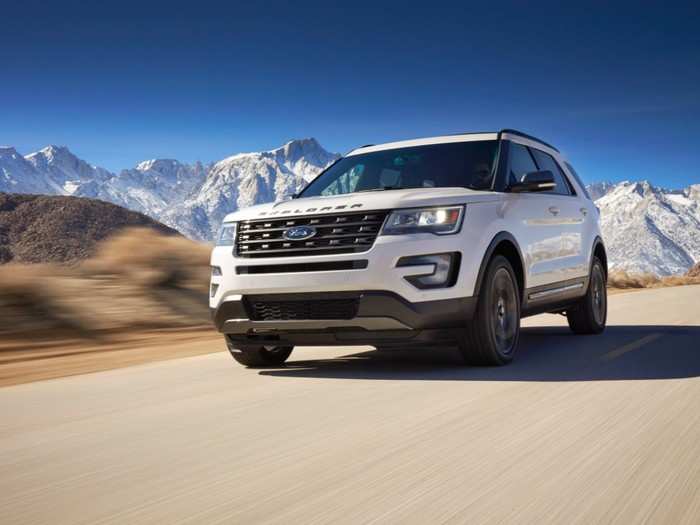
....The Honda Pilot,...
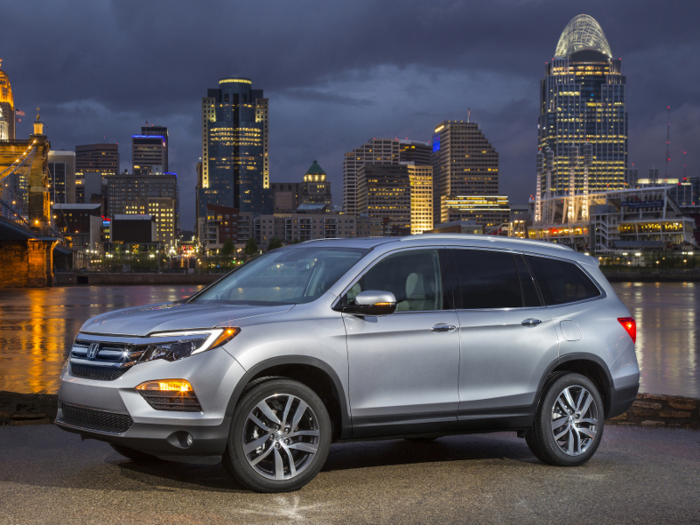
... The Nissan Pathfinder,...
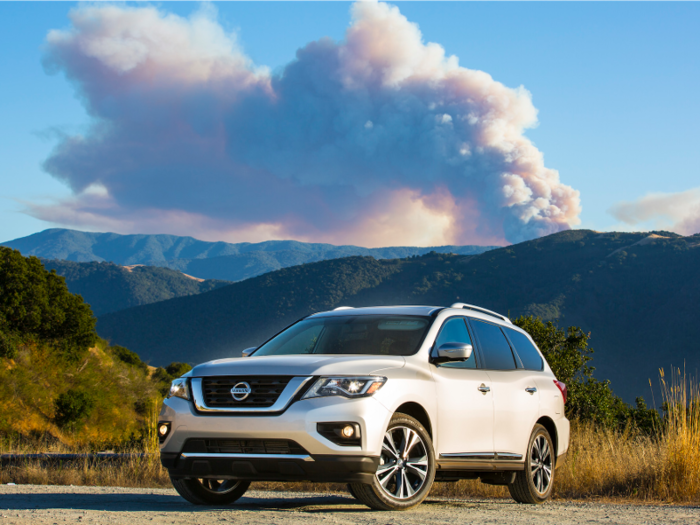
... The Chevrolet Traverse, and...

... The Volkswagen Atlas.
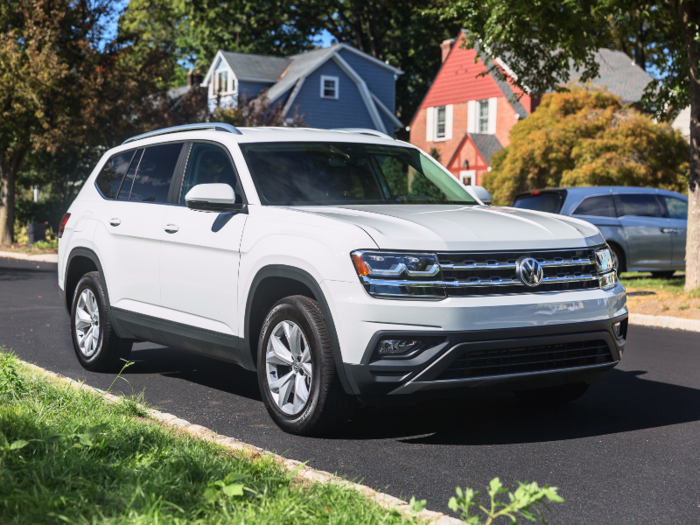
For 2016, Toyota gave the front end of the Highlander a significant makeover, complete with a massive chrome grille. Personally, I think the Highlander's revised grille work looks attractive. However, not everyone agrees. So for the SE trim, you can have the chrome replaced with a more subdued black grille.
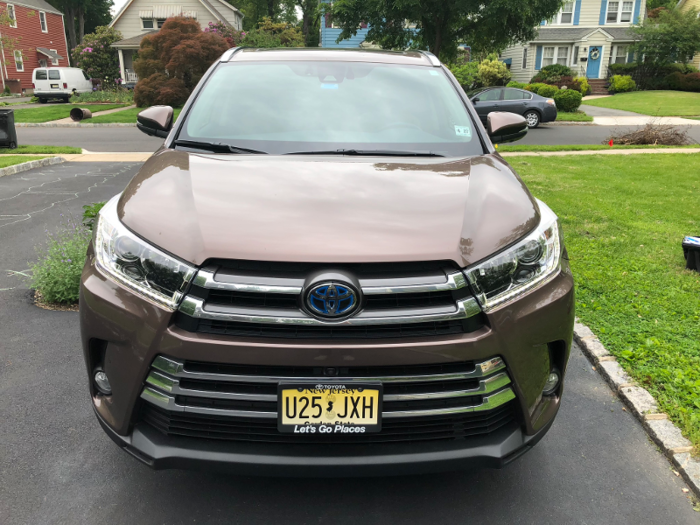
The Highlander's side profile is traditional crossover utility — boxy with rounded edges. It straddles the line between tall wagon and traditional SUV looks.
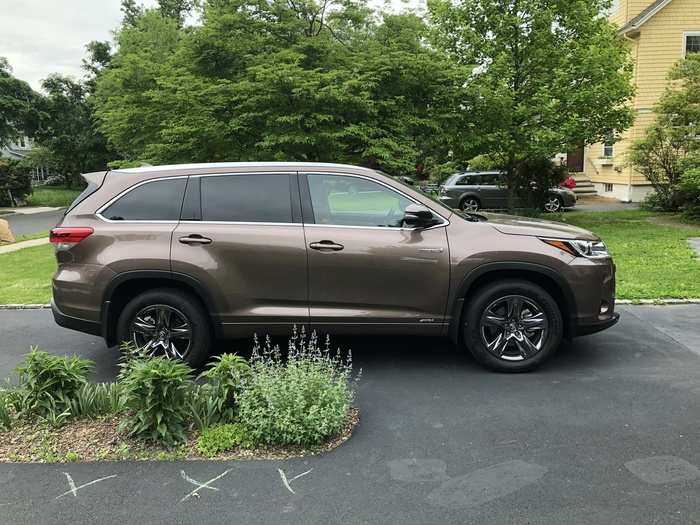
The rear end of the Highlander features an integrated roof spoiler and a traditional lift-up tailgate.
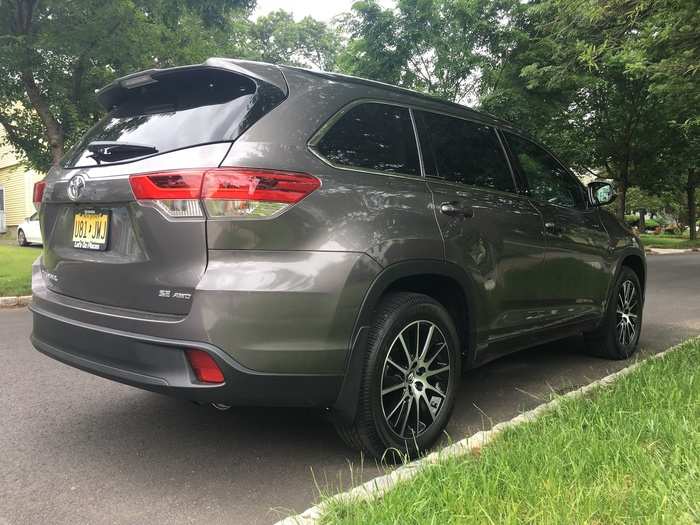
It's also one of the few remaining SUVs to have a separate lift-up window that's great for loading small items.

But as a family SUV, the interior is where the Highlander earns its money.
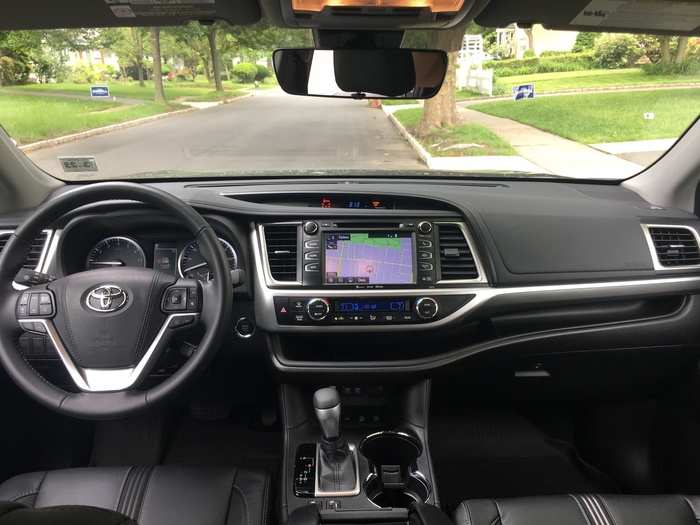
We found the cabin to be a really pleasant and friendly place to be. It's quiet, comfortable, and the interior ergonomics are pretty much spot on. Material quality is very good and everything you touch feels really well put together. Everything about the Highlander's cabin gives off a reassuring sense of solidity.
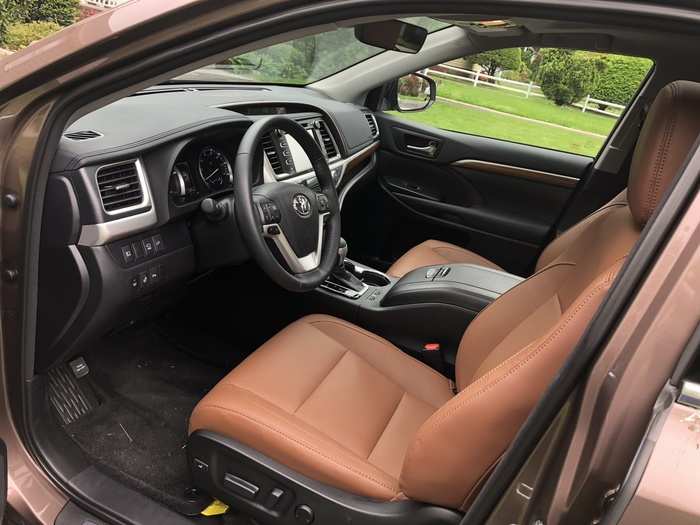
In front of the driver is a 4.2-inch color information display flanked by a pair of traditional analog gauges. The Highlander comes standard with the Toyota Safety Sense package which includes pre-collision warning, pedestrian warning, Lane departure warning, automatic high beams, and radar cruise control.
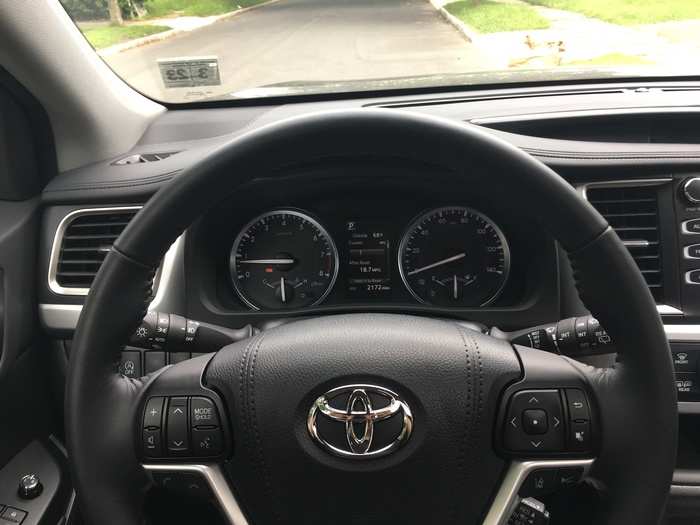
Our test cars came with an eight-inch touchscreen running Toyota's Entune infotainment system. Based Highlanders get a smaller 6.1-inch touchscreen.
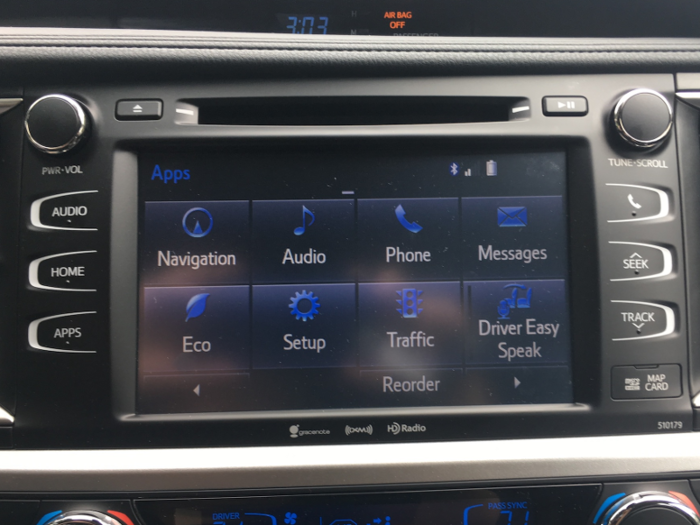
In spite of Toyota's work to improve the system's usability, Entune is not one of our favorites. It's perhaps the weakest part of the entire Highlander package.
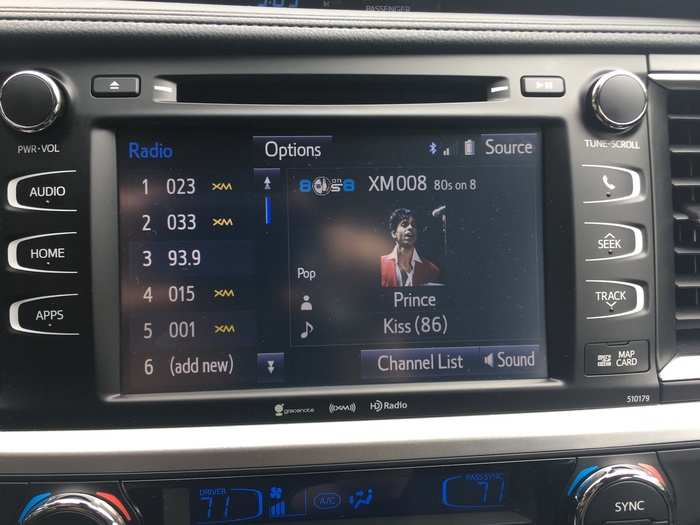
Entune's image quality is poor and its overall presentation feels like it's stuck in a previous decade.
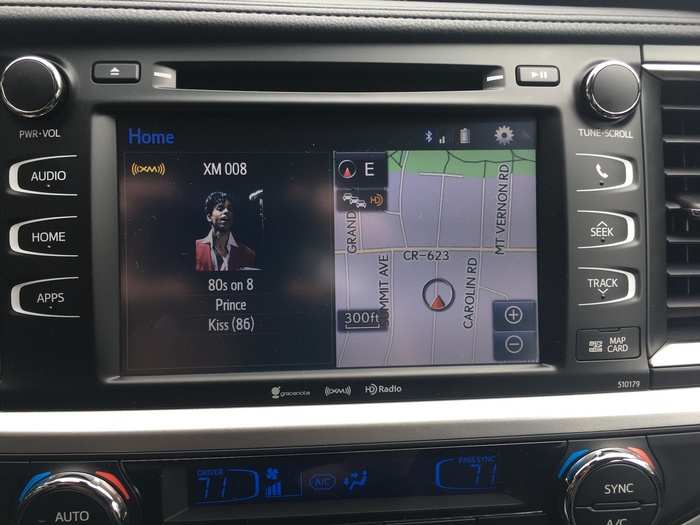
The system lags behind the latest from General Motors, Ford, and Volkswagen.
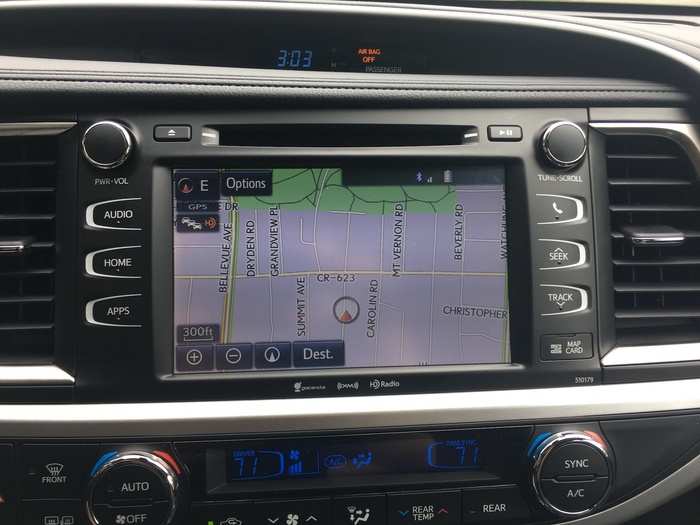
The infotainment unit onboard our Hybrid test car experienced a glitch that resulted in the system rebooting once every 60 seconds or so. This forced us to return the Hybrid text car to Toyota for repairs.
There is also plenty of places to plug in your smart devices and laptops. In total, there are five USB ports.
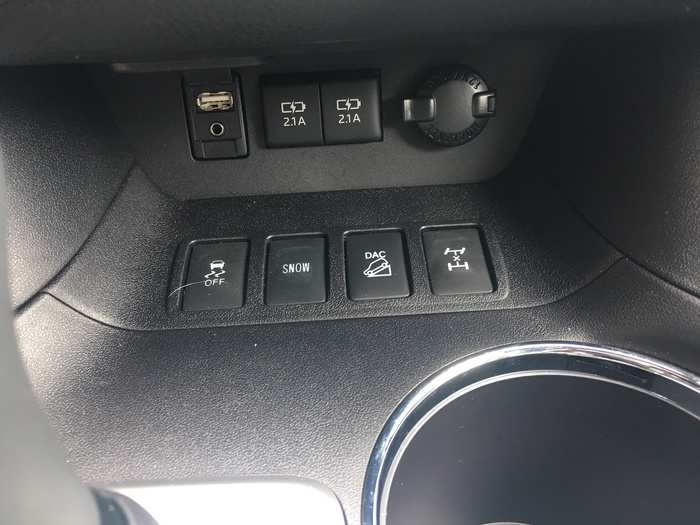
There are also some rather ingenious storage nooks including this shelf that runs along the length of the front dash.
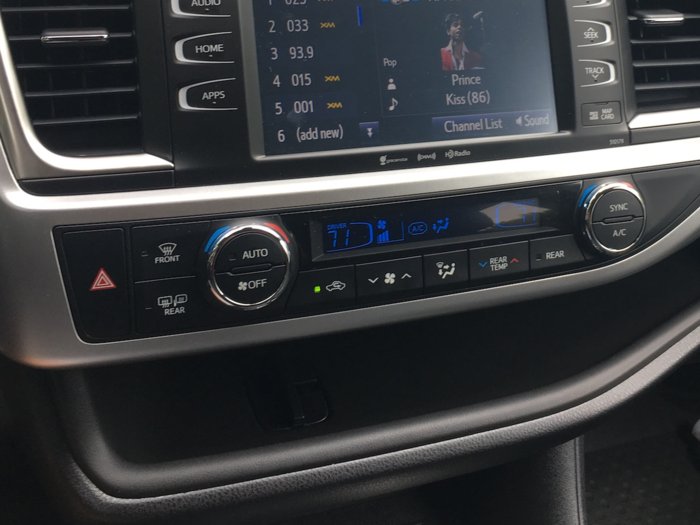
There's also a massive storage box under the center armrest between the front seats.
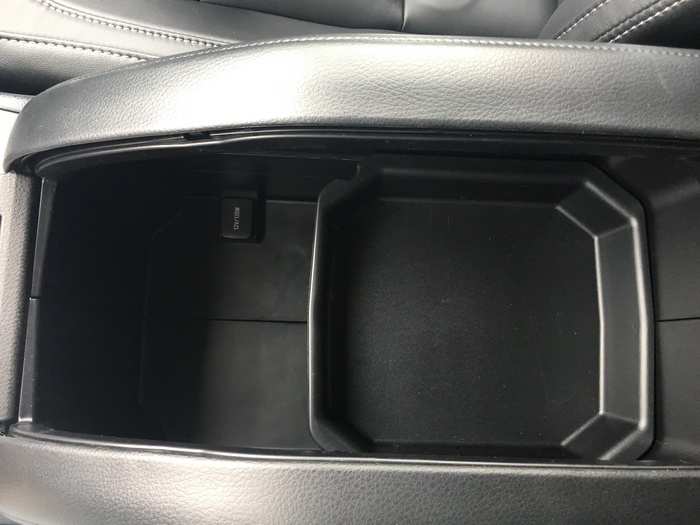
The second row of our test cars came equipped with a pair of optional captains chairs. A bench seat is standard.
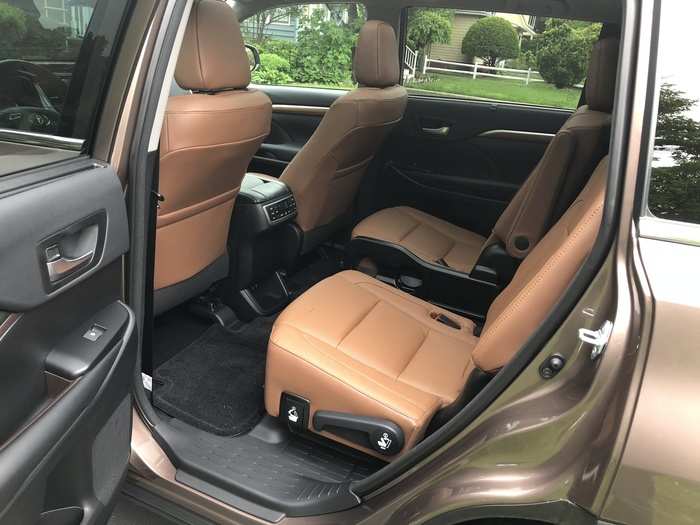
The second row proved to be spacious and comfortable. The captain's chairs also allow for riders to easily pass through the third row.
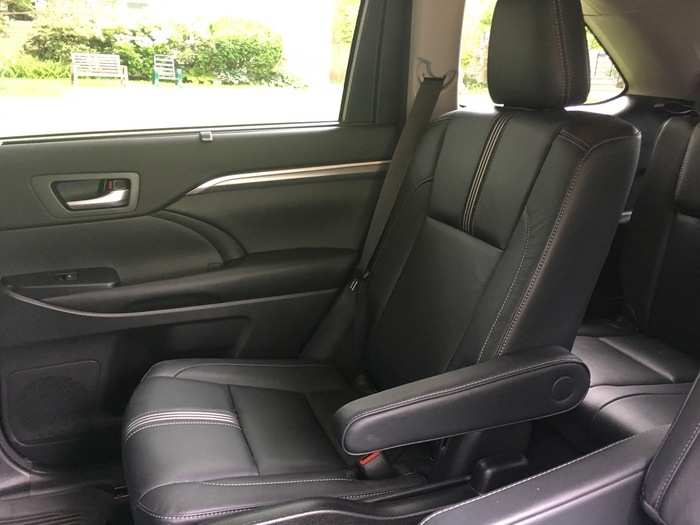
There's a collapsible cup holder tray located between the second-row seats. It's quite handy for passengers, but the tray in our SE test car rattled over bumps and rough surfaces.
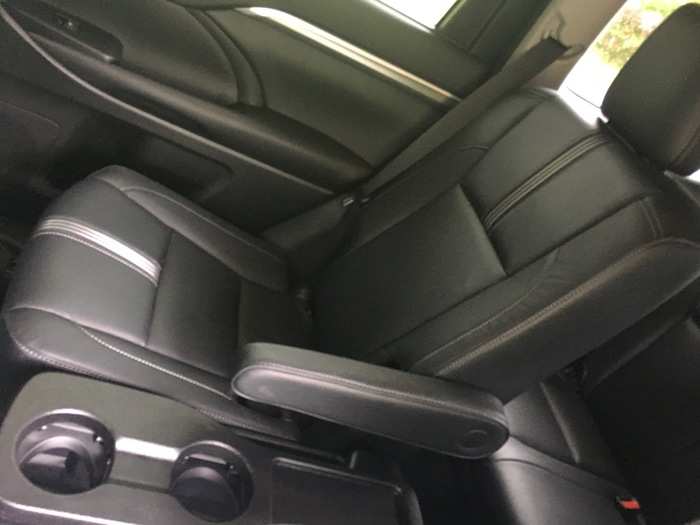
The third row boasts ample room for the trio of children, but adults will find it a bit cramped back there.
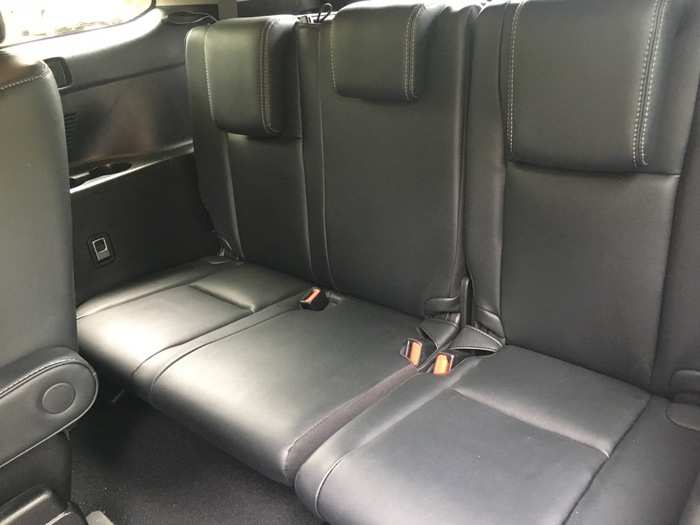
Our Hybrid test car came equipped with a large panoramic roof. It really floods the cabin with natural light even when the sun isn't shining.

There are 13.8 cubic feet of cargo room behind the third row.
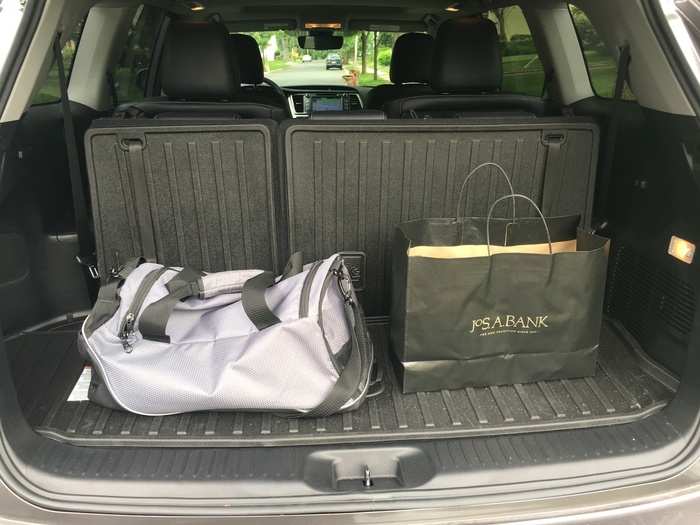
With the third row folded, cargo capacity goes up to 42.3 cubic feet. Fold down the second row and the Highlander's cargo space nearly doubles to 83.7 cubic feet.
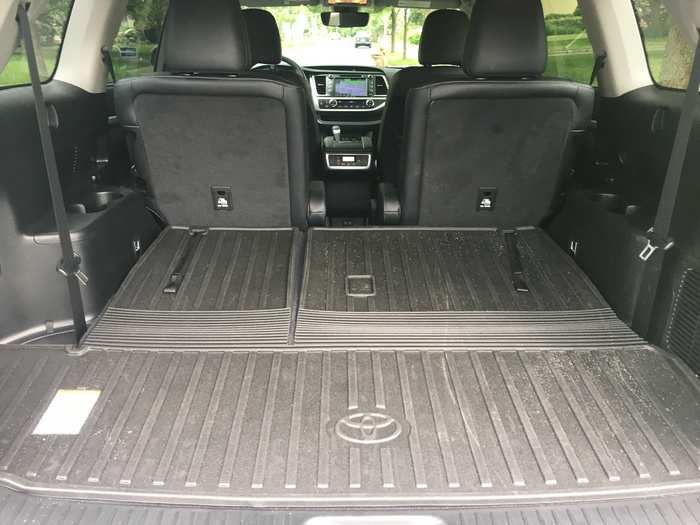
Under the hood of our Highlander SE is a 295 horsepower, 3.5-liter, naturally aspirated V6. The Hybrid model adds Toyota's Hybrid Synergy Drive to the same V6, boosting horsepower to 306. The base Highlanders is powered by a somewhat diminutive 185 horsepower, 2.7-liter, naturally aspirated four-cylinder.
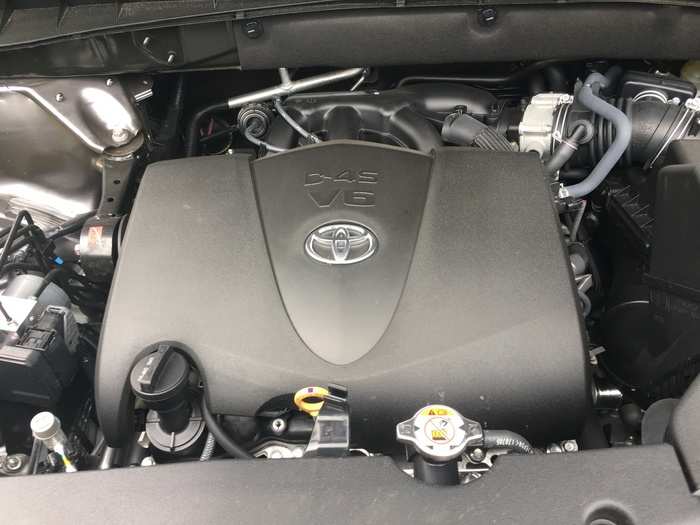
The four-cylinder is paired with a traditional six-speed automatic transmission while the V6 powered cars get an eight-speed unit. The hybrid models are equipped with a continuously variable transmission.
The 3.5 liter V6, shared with the Toyota Camry and Avalon sedans, is silky smooth. No one does naturally aspirated V6 vehicles quite as well as Toyota and it shows.
Behind the wheel, acceleration felt relatively brisk in both of our test cars, but the Highlander really makes you work for it. Our 4,400-pound SE's eight-speed automatic felt lethargic under hard acceleration. And when it decided to change gears, the shifts were hardly smooth.
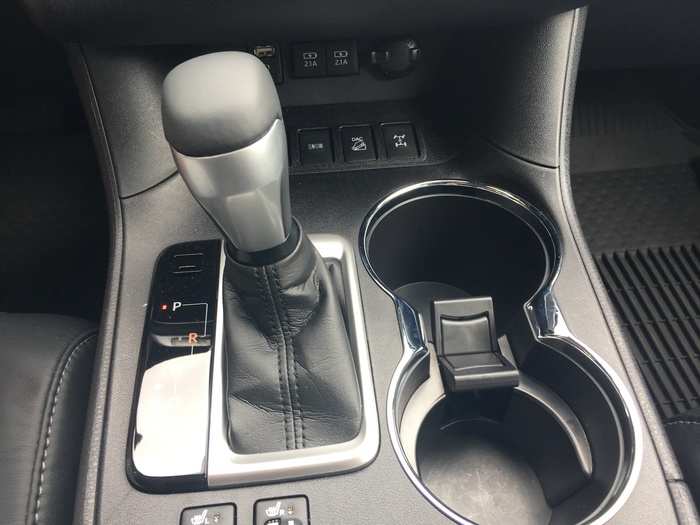
The lethargy comes from the fact that the transmission is programmed for fuel economy. The Environmental Protection Agency projects fuel economy figures of 20 mpg city, 26 mpg highway, and 22 mpg combined for the SE. However, we struggled to break 20 mpg in mixed city and highway driving.
To drive, the Highlander was unremarkable. It's far from surefooted in the corners and its steering is rather numb and uncommunicative. It reminded me of the 1997 Toyota Sienna that my mom used to give me driving lessons in more than a decade ago. The SE's sport-tuned suspension doesn't make much of a difference.
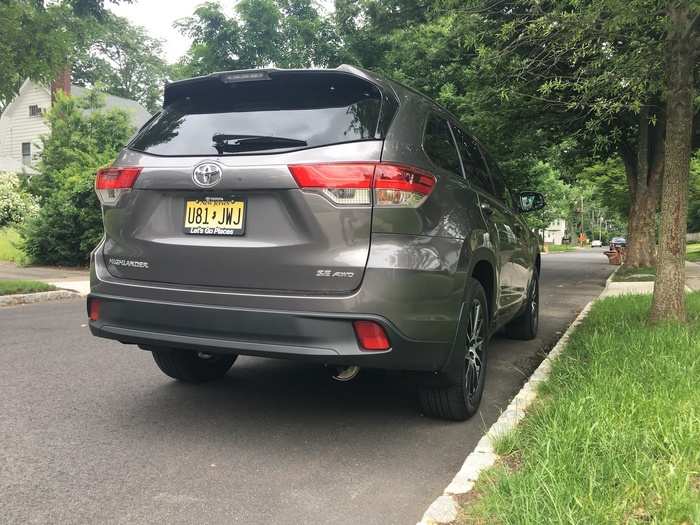
Our verdict.

The Toyota Highlander is one of the most successful crossover SUVs in recent memory for a reason. It's really good at meeting the needs of its target demographic, the American family.
I often look at our fleet of test cars and think about how quickly it would take seven-year-old me to completely dismantle a particular interior. The answer to that question, by the way, is usually a weeks worth of school runs. Now image a car full of little Bens. Few cars stand a chance.
Going through the Highlander, you notice the quality and the sturdiness of its construction. Its interior is built to be bumped into, scratched, and spilled on.
The Highlander is also known for it rock-solid reliability. Earning high marks from both Consumer Reports and JD Power.
In short, it's built to survive life as a family hauler.
The Highlander is also roomy, comfortable, versatile, and packed with handy storage nooks and charging ports.
Sure, it's not exactly sporty to drive and its infotainment system is in need of an upgrade.
But that's not what's most important. Most Highlander buyers probably aren't looking for an exhilarating driving experience or the latest tech. Instead, comfort, roominess, and reliability are likely to be much higher on the list.
In that case, the Toyota Highlander delivers in spades.
Popular Right Now
Popular Keywords
Advertisement